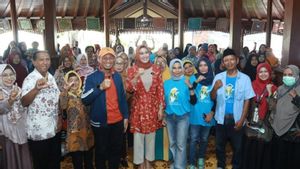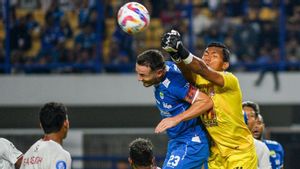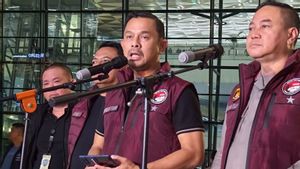JAKARTA - Jaya Antjol Circuit Djakarta is Indonesia's first world-class race track. The legendary circuit gave birth to many talented Indonesian racers. From Hengky Irawan to Tinton Soeprapto. Even national and international class races are often presented. However, his success had to come to an end. The roar of the development of the capital city is the estuary. The massive development has made the Ancol Circuit slowly abandoned. Sentul Circuit was asked as his successor.
The narrative of Ancol as the most complete amusement park has emerged since the early 1970s. The presence of the Ancol Dreamland Park project was the culprit. The Ancol area was then transformed like Disneyland. The facilities are complete. There is all the entertainment. Golf courses, art markets, casinos and cinemas are some of them.
That success sparked other developments. The idea of presenting national and international class races also surfaced. All that because the general public began to be avid racing. The DKI Jakarta government immediately heard the aspiration. Circuit development plans are being discussed. Therefore, the Jaya Antjol Circuit Djakarta was built in stages and received the support of many parties.
The circuit which was originally an ordinary street was immediately fully developed in the 1970s. In total there are 12 corners with a circuit length of 4.4 km. Complete facilities for paddock, pit, and others were also prepared. The presence of the circuit has in fact attracted many people to organize national and international races.

Even the mock race “Le Mans 24 Hours” was adopted at the Ancol Circuit. However, the race was modified to become the “Six Hour Car Endurance Race.” Not only the title race that is presented. The Ancol Circuit also gave birth to many national racing stars. Among others, Hengky Irawan, Saksono, Karsono, and Tinton Suprapto.
"For this project, the role of Pertamina and several large entrepreneurs engaged in the automotive sector, such as Astra, is quite large, both in its construction and in every racing event. The Indonesian Mobil Association (IMI) and police figures, such as Soecipto Yudhodihardjo (Chief of the Indonesian National Police at the end of President Soekarno's administration), Hoegeng Imam Santoso, Sukahar, and Widodo Budidharmo have a fairly important role."
“The construction of the Car Racing Circuit is strongly supported by the police figures and the Indonesian Motor Association (IMI), such as Mukhtar Latif. The phenomenon of illegal racing on the streets of the capital, as well as official races that are held inappropriately, such as at Halim Airport and Parking Timur Senayan, are the background for the construction of this vehicle project," said an important figure in the construction of the Ancol Project, Seokardjo Hardjosoewirjo, as written by Sugianto Sastrosoemarto in the book. Footprints of Soekardjo Hardjosoewirjo in Ancol Dreamland Park (2010).
Land ProblemThe triumph of the Ancol Circuit did not last long. The mid-1980s was a difficult time for the Ancol Circuit. Race events are rare. The narrowing of the circuit arena due to development is considered the main source. Local residents began to be disturbed by the roar of racing engines. The condition was exacerbated by the absence of Ancol holding national or international races.
Instead, President Soeharto's youngest son initiated the creation of the Sentul International Circuit which was completed in 1993. The presence of the circuit brought blessings to Indonesia. A series of world-class racing events have begun to pave the way in Sentul. The most prestigious motorcycle race in the world, the GP500 (Now: MotoGP), especially.

“Autosport in Indonesia has experienced its heyday in the 1970s. The racers of Tinton Suprapto, Benny Hidayat, Sarsito, Beng Siswanto have been poor across several Asian international championships. The Ancol Circuit, which was founded in 1971, is also the venue for the Indonesian Grand Prix which takes place almost every year, which is attended by many foreign racers.”
“In fact, in 1976 the first Formula car race was held in Ancol, although it was limited to Formula II which used a 1,600 cc engine car. Now it seems that this glory will be tried again through this new circuit (Sentul Circuit)," concluded Tri Budianto Soekarno and Ahmed Kurnia Soeriawidjaja in their article in Tempo Magazine entitled Formula 1 Entering Citeureup (1988).
The English, Chinese, Japanese, Arabic, and French versions are automatically generated by the AI. So there may still be inaccuracies in translating, please always see Indonesian as our main language. (system supported by DigitalSiber.id)








